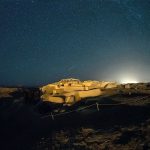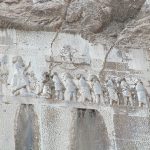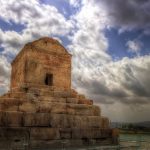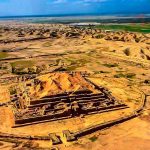Perspolis was the ceremonial capital of the Achaemenid Empire (ca. 550–330 BCE). It is situated 60 kmnortheast of the city of Shiraz in Fars Province, Iran. The earliest remains of Persepolis date back to 515 BCE. It exemplifies the Achaemenid style of architecture. UNESCO declared the ruins of Persepolis a World Heritage Site in 1979.
An inscription left in AD 311 by Sasanian prince Shapur Sakanshah, the son of Hormizd II, refers to the site as Sad-stūn, meaning “Hundred Pillars”. Because medieval Persians attributed the site to Jamshid, an Iranian mythological king, it has been referred to as Takht-e-Jamshid , literally meaning “Throne of Jamshid”. Another name given to the site in the medieval period was Čehel Menār, literally meaning “Forty Minarets”
History
Archaeological evidence shows that the earliest remains of Persepolis date back to 515 BC. André Godard, the French archaeologist who excavated Persepolis in the early 1930s, believed that it was Cyrus the Great who chose the site of Persepolis, but that it was Darius I who built the terrace and the palaces. Inscriptions on these buildings support the belief that they were constructed by Darius.
Indeed, in his Chronology of the Ancient Nations, the native Iranian writer Biruni indicates unavailability of certain native Iranian historiographical sources in the post-Achaemenid era, especially during the Parthian Empire. He adds: [Alexander] burned the whole of Persepolis as revenge to the Persians, because it seems the Persian King Xerxes had burnt the Greek City of Athens around 150 years ago. People say that, even at the present time, the traces of fire are visible in some places.
Architecture
Persepolitan architecture is noted for its use of the Persian column, which was probably based on earlier wooden columns. Architects resorted to stone only when the largest cedars of Lebanon or teak trees of India did not fulfill the required sizes. Column bases and capitals were made of stone, even on wooden shafts, but the existence of wooden capitals is probable. In 518 BC, a large number of the most experienced engineers, architects, and artists from the four corners of the universe were summoned to engage and with participation, build the first building to be a symbol of universal unity and peace and equality for thousands of years.
The buildings at Persepolis include three general groupings: military quarters, the treasury, and the reception halls and occasional houses for the King. Noted structures include the Great Stairway, the Gate of All Nations, the Apadana, the Hall of a Hundred Columns, the Tripylon Hall and the Tachara, the Hadish Palace, the Palace of Artaxerxes III, the Imperial Treasury, the Royal Stables, and the Chariot House.
- Opens at: 07:30 – 20:00
- Entrance fee: 300,000 IRR
- Costume: no limit













